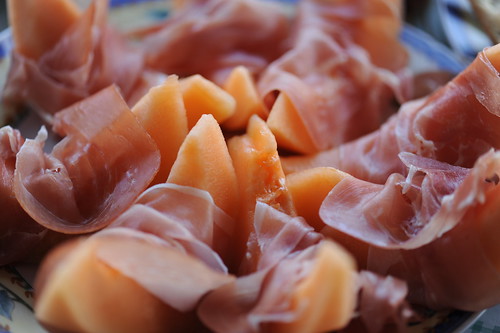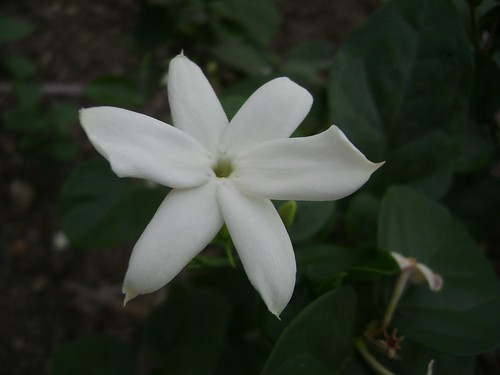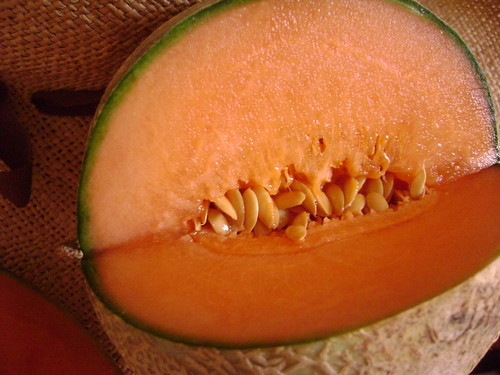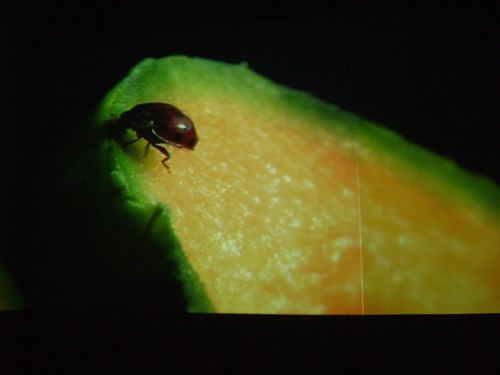
What scents or smells make you so ecstatically happy that you want to sing out loud or jump up and down with joy?
I asked 13 other bloggers to help me answer this question and share with you our picks for perfumes to wear this spring. Scents that could make you feel giddy, cheerful and excited about life again. And my list includes 8 staples that I seem to return to for several years now and never fail to bring a smile to my face and a song to my heart.
I tried my best to bring you a list that has no melancholy in it whatsoever; but some of the scents have an inevitable touch of that emotion in them. And come to think of it, spring does too, because the flowers, as beautiful as they are in full bloom, only bring their very own death upon themselves by exhaling all their beauty in one powerful breath in this short, abrupt season exploding with life.
The perfumes that I find a little melancholy usually have a little powdery, bittersweet character (usually an effect that can be easily blamed on the presence of coumarin in some shape or form). Whenever these are mentioned, they will be accompanied with an asterisks, just so that you are properly warned (in case you are looking for a 100% cheerful spring).
JasmineJasmine absolute, and, of course - fresh jasmine flowers of any kind, bring an immediate smile to my face. The bushes are usually dormant in winter, but come spring and warmth and they start building up their stash of star-shaped flowers that will reach its peak in the heat of the summer. There are so many jasmine scents that I love, but the ones that I associate and wear in the spring are
Le Parfum de Thérèse, which I have come to associate with the season and with Passovers in Israel, because it’s when I worn it and fell in love with it first; and also because it’s so hot there at this time of the year that the balance between jasmine, basil and under ripe plum and melon is nearly the only thing I can wear there. When I have to stay in Vancouver in Passover I wear it to remind me of the happy times at home; and it also takes me through summer bringing a smile to my face every single time I smell it, no matter what the occasion or mood I’m in.
Citrus Orchards in BloomThere is no scent with so much unconditional happiness in my mind as orchards in full bloom. The blossoms begin sometimes in March, and continues through April, usually coinciding with the celebration of Passover. I am still wondering why there is no citrus flower holiday in Israel. They really should make a Hanami festival of sorts out of it, but they don’t. Instead, the day after Passover has become a day of barbecue picnics that if anything mask the scent of any orange blossoms on the horizon. But that’s for another story…
The best way to experience orange blossoms is to be around then. If you live out of the citrus growing zone like me, you can forget about it unless you travel to a citrus destination. Because I can’t always travel to smell the orange blossoms, I created
Zohar,Another way for me to overcome that home-sickness is sipping on
pomelo-blossom tea, a rare green tea that was perfumed in the same technique that jasmine green tea is made, by layering petals of pomelo flowers between the tea leaves and removing them once they’ve exhaled all their fragrant breath onto the tea. As a matter of fact, I’m sipping this very tea as I write it, and it transports me to my family’s orchard, early in the morning, when the shapely pomelo petals are still covered with dew and just begin to open and give away their clean, heady scent. And a far more modern and synthetic orange blossom associated scent that has become a spring stable is Narcisso Rodriguez, which is mostly by pure incident (because it barely smells like orange blossom at all), because I worn it in the springtime in one of my most fun spring travels to Israel as well.
Ume (Japanese Plum) BlossomsIt literally took me years to discover the scent of Vancouver’s spring. The most significant and emotionally charged is the scent of the ume (Japanese plum) blossoms. Ume blossoms are smaller and have only one layer of petals. They have a peculiar wildflower-like scent, very ethereal and heady, and at the same time a little powdery and bittersweet. It is more apparent on warmer days; so when early spring is rainy and gray, you can hardly notice their scent in the air.
The sakura (Japanese cherry) blossoms grow in clusters, and are way more showy and impressive looking (especially the ones that have multilayered petals like roses), but they are far less fragrant if at all.
Ume blossoms bloom earlier, usually beginning in January and on till March (depending on the temperatures, of course), and grace the street corner where I live. The ume and sakura blossoms make Vancouver a place worth staying in the springtime, and my only consolation for missing the orchards of Israel when I can’t go there. Inspired by these blossoms (and the Ezra Pound poem) I created
Hanami*, which is what I wear almost exclusively throughout the hanami season in Vancouver. Another taste of it can be experienced if you eat sakuramochi at room temperature. The pickled cherry leaf that wraps this pastry adds this peculiar, flowery and bittersweet aroma to the red bean paste filling, and I know for a fact it has coumarin in it.
Fresh FreesiasI visit the florist regularly to get a fresh supply of freesias. I pick them based on their scent rather than their looks: the most fragrant will go home with me, and these are either white (which is more peppery) or yellow (slightly more full-bodied and fruity). I sniff each bouquet till I find the one… And I also have a favourite freesia perfume:
Ofresia by Diptyque, created by the world renowned nose Olivia Giacobetti. This freesia perfectly balances the freshly ground green pepper scent of freesias with a little with no sharpness, and some sweetness in the base to make it addictive.
Lilies of the ValleyOther fresh flowers that are more rare to come by are lilies of the valley: they bloom in the spring, usually in May (this year I was lucky to find some in March, but they are gone again and should return in May as the florist informed me). I rarely see them in gardens, and when I do they look quite miserable (but smell heavenly just the same).
Diorissimo is the best lily of the valley scent in the universe that is not the fresh flower. But it’s more than just a lily of the valley soliflore – Edmon Roudnitska himself said he wanted to capture the scent of the little flowers as well as their surroundings, and even went to the extent of planting a patch of lily of the valley in his garden to study them. Diorissimo is particularly gorgeous in the parfum extrait formulation that I have from 10 years ago, where the oakmoss peeks through like the undergrowth of the forest environment of the lilies, and boronia, galbanum, jasmine and rose make the centre of the perfume vivid.
LilacsNow, this is not a scent without any melancholy attached to it. I have a sprig of lilac by my table and the real flower has more complexity to it than what we’ve been trained to think of as “lilac”. Besides the very high level of the light, woody-floral linalool that accounts in part for its cleanliness, the lilac on hand has a balsamic-sweet styrax undertone. It’s rare to find lilac scents that don’t smell like bathroom freshener’s or an old maid’s talcum powder; but two perfumes that I’ve met come very close to capturing the real scent plus adding a very personal spin to the theme:
Olivia Gioacobetti’s
En Passant*, in which green cucumber and ink-like and starchy wheat add a contemplative, cool mist of lilac clusters; and Ineke Ruhland’s
After My Own Heart*, where raspberry and heliotropin bring a lighthearted, romantic sweetness of girly scented stationary.
MimosaScent that traveled from Australia to Provence and the Middle east, mimosas have an invisible wildflower scent that is heady and light and woody, with a little cucuber-coolness to it. My favourite mimosa are light and refreshing: L’Artisan Parfumeur’s
Mimosa Pour Moi and my own Les
Nuages de Joie Jaune. which literally means “clouds of yellow happiness.
MagnoliaAfter the cherry blossoms, magnolias have become almost a symbol of Vancouver in spring. There are so many trees and varieties, it would be difficult to describe all of them here. The two significant differences are white versus the pink ones. The white ones are very light and airy and almost woody-clean, as well as fruity like peach. The pink ones can be fruity, but sometimes they are very heady and turn almost wine-like and spicy (but not like mulled wine!). My favourite spring scent with magnolias in it is
Opium Fleur de Shanghai. Again, this is by association, because this light summer-version (limited edition, unfortunately, like all of them), came out in the springtime. It just so happened to be in a very happy spring for me, and I worn it every day for several month. The magnolia is very distinct (and quite rarely used in perfumes in such concentration) and beautifully balanced with the resinous bitterness of myrrh, the sweetness of peru balsam oil and the spiciness of cloves. It’s luxurious and light and very easy to wear.
Spearmint & Lemon VerbenaFresh herbs from the garden give me a sense of well-being, and my favourite of them all are lemon verbena and spearmint. I love picking these fresh and brew them into a delicate tisane together, sometimes also with lemongrass added. Moroccan mint tea is another favourite – with either green or black tea, fresh sprigs of spearmint, and generous dose of sugar (though not as generous as the Moroccans serve it with), perhaps even with a sprinkle of orange flower water!
One of the treats I serve to guests at my studio is my original
Charisma tea blend, which is jasmine green tea with dried osmanthus flowers, fresh lemon verbena, lemongrass and spearmint from my balcony’s herb garden. In the wintertime I serve a modified blend with the dried herbs (most of which were hand-picked and dried by my loving mother). And for those of you too faraway to visit, Dawna have created for me an even more sophisticated version of a fine pomello blossom tea with the same dry fragrant herbs and osmanthus flowers.
Verbena and spearmint are those notes which I love in real life but less so in perfume. An exception is
Spring Flower, which has a mint note and is another perfume that never fails to make me feel happy. I have nearly run out of an entire bottle, which says a lot.
CantaloupeLast year I spent a lazy afternoon in my hotel room in Grasse with a cantaloupe… I know, this does not sound good. But I assure you, even though it was only the two of us, nothing happened that afternoon behind those closed doors… Except that I couldn’t get enough of the fragrance that filled the room. Which is exactly why I took my time before slashing it open with the knife I bought for that purpose only. As it turns out (a couple of days later), This cantaloupe was not only the most fragrant, but also the most delicious, juicy and beautiful fruit ever.
Another cantaloupe encounter that trip was with Michel Roudnitska’s Emotionelle, a beautiful and sophisticated perfume centered around jasmine, violet and overripe cantaloupe.
Ayala’s Spring Essentials:
Le Parfum de ThérèseDiorissimo
Emotionelle
Vanille Galante
ZoharHanamiSpring FlowerOpium Fleur de Shanghai
Narcisso Rodriguez for Her (EdT)
Ofresia
Leave a comment sharing with us your spring staples, or any scents and notes that bring a smile on your face, and enter to win one of these prizes:
1) Mini parfum of
Zohar2) Tin of
Charism Tea3) TBA
Participating blogs:
Katie Puckrik Smells
Perfume ShrineThe Non BlondeI Smell Therefore I AmNotes from the LedgeScent Hive
Savvy Thinker
Roxana's Illuminated Journal
Perfume in Progress
All I Am A Redhead
Ambre Gris
Olfactarama
A Rose Beyond the Thames








